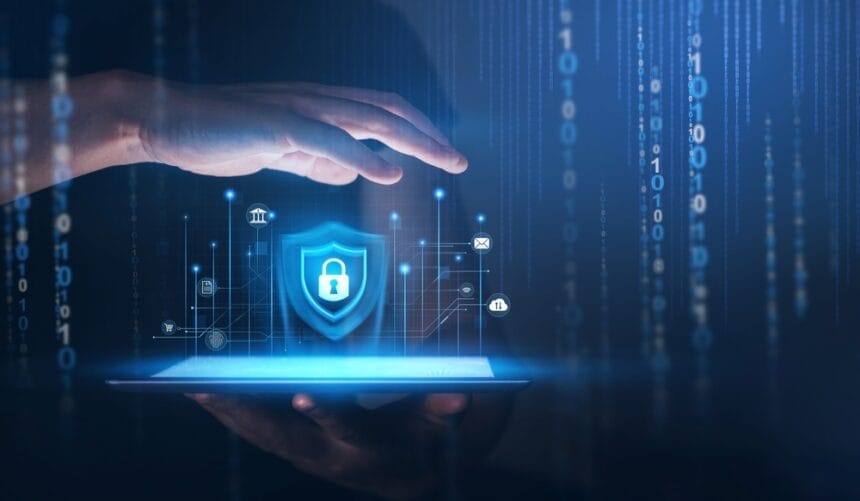Artificial intelligence technology has been very helpful for businesses all over the world. A growing number of businesses are leveraging AI to boost employee productivity, optimize financial management, streamline marketing strategies and mitigate the risk of fraud.
Despite its many benefits, companies underutilize AI technology. One report from the Census Bureau last month showed just over 4% of companies report actually using AI, even though half of Fortune 500 companies talk about it.
One of the reasons that AI may not be widely used in business is that many companies aren’t aware of all of its potential benefits. One of the things that they may want to consider is using AI to help with their security.
AI Can Be a Godsend for Business Security
In the dynamic realm of security, the infusion of technology has become indispensable for businesses striving to establish resilient physical security solutions. The amalgamation of cutting-edge technologies has substantially augmented the capacities of physical security systems, furnishing businesses with more all-encompassing and efficient tools to shield their assets, premises, and personnel.
Next-Generation Access Control Systems
Access control systems have transcended traditional locks and keys, now embracing sophisticated technologies such as smart cards, biometric authentication, and mobile credentials. Systems like those available at genetec.com enable businesses to regulate and monitor access to different areas within their premises. The integration of access control with employee databases facilitates seamless onboarding and offboarding processes, elevating both security and operational efficiency.
Intrusion Detection and Alarms
Advanced intrusion detection systems incorporate sensors, motion detectors, and smart algorithms to identify unauthorized entry or suspicious activities. These systems are adept at triggering alarms and notifications, promptly alerting security personnel or law enforcement in real-time. Integration with surveillance systems provides a more comprehensive understanding of security incidents and facilitates a swift and informed response.
Perimeter Security Technologies
Businesses invest in technologies to fortify their physical perimeters, deploying fences, gates, and barriers equipped with sensors. These sensors can discern breaches, tampering, or unusual activities along the perimeter, triggering immediate responses. Technologies such as infrared sensors or laser-based systems contribute to establishing a robust multi-layered defense against potential threats.
Artificial Intelligence (AI) and Machine Learning
The integration of artificial intelligence and machine learning has brought about a paradigm shift in the capabilities of physical security systems. AI-powered analytics can scrutinize extensive data from surveillance cameras, identifying patterns, anomalies, and potential security threats. Machine learning algorithms continually improve, enhancing the system’s ability to distinguish normal activities from suspicious behavior over time.
Mobile Security Applications
The prevalence of smartphones has given rise to mobile security applications, empowering businesses to remotely monitor and control their security systems. Security personnel can receive real-time alerts, access surveillance footage, and manage access control systems through mobile devices. This mobile capability enhances responsiveness and situational awareness, especially for businesses with multiple locations.
Integration of Systems
A prominent trend in modern physical security involves integrating various security systems into a unified platform. This convergence enables businesses to manage and monitor multiple security components through a singular interface. The integration of access control with video surveillance and alarm systems creates a more holistic and streamlined security infrastructure.
Cloud-Based Solutions
Cloud-based solutions have revolutionized the storage and management of security data. The cloud also plays an important role in data security. Businesses can now store surveillance footage, access logs, and other critical data in secure cloud environments, reducing the reliance on on-premises servers. This not only minimizes the need for extensive physical infrastructure but also provides flexibility and scalability for growing businesses.
Cybersecurity Measures
As physical security systems become more interconnected and reliant on the internet, implementing robust cybersecurity measures is paramount. Businesses must adopt secure network protocols, encryption, and regular security updates to safeguard against cyber threats that could compromise their physical security infrastructure. Cybersecurity is one of the many ways that AI can be very helpful.
The assimilation of technology into physical security has ushered in a new era of capabilities and efficiencies for businesses. From advanced surveillance systems to biometric authentication and artificial intelligence, these technologies collectively contribute to creating safer environments. As businesses navigate the dynamic landscape of security challenges, embracing and harnessing these technologies will be key to maintaining a robust and proactive approach to physical security. By staying abreast of technological advancements, businesses can continually enhance their safety measures and adapt to emerging threats effectively.

